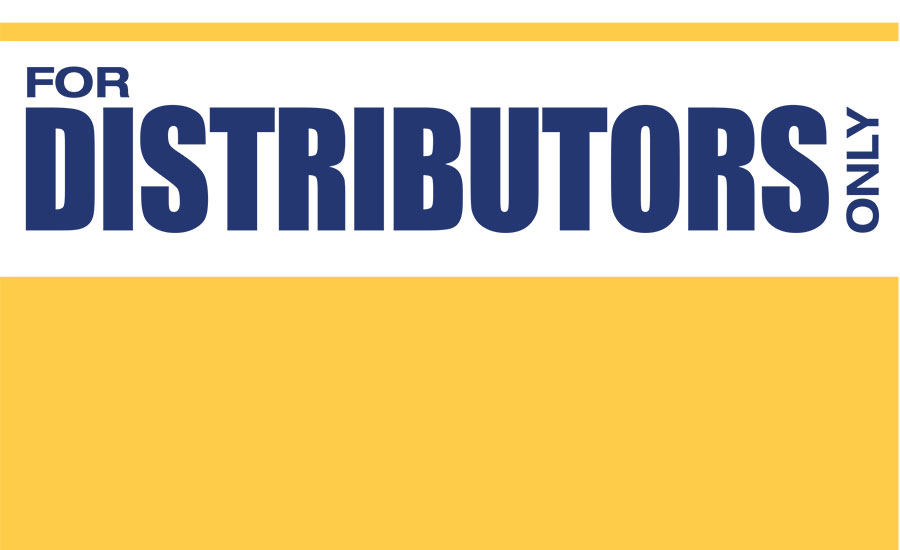he title of my talk is “Reimagining Distribution’s Value Proposition.” If I could give you the full story of my talk, my title would be something more akin to: “Reimagining Distribution’s Value Proposition So We Can Do a Better Job of Winning Customers, Growing Our Businesses, Increasing Our Gross Margins, and Staving Off Competitors from All Directions.”
Not very succinct, I grant you, but that sums up why I think one of our highest priorities must be to take the time and make the effort — each of us — to seriously and soberly reimagine our company’s value proposition from the ground up. How can we rework it to make us more efficient and valuable in the already highly crowded, ultra-competitive, and increasingly global marketplace for products and services?
This reimagining must go beyond old-school “right time, right place, right price” thinking. This is a minimum in today’s distribution world just to be eligible to be in the arena and play the game. Rather, we must contemplate how we go to market in terms that are “innovation–driven.”
Do you plan to reimagine your value proposition or do you plan to remain status quo?
Do you believe that the value proposition you thrived on in the past will continue to work in the future?
Does your current value proposition stem from true vision or is it the way we have always done things?
Pressure to perform
As distributors of all sizes and across all lines of trade, we face unrelenting, competitive pressure from all directions… be it the pressure to perform that comes with the ongoing consolidation of our vendors and customers, or the pressure from new, powerful and deep-pocketed online competitors moving into the traditional distribution space.
To succeed in the face of these competitive threats, we have to constantly apply innovation and insight as we reimagine the value proposition we present to our vendors and customers. If we don’t, our supply chain partners will simply find other ways to fulfill their needs.
Our free-enterprise market operates as it should. Commerce always flows to the most efficient channel or channels. Therefore, we need to think deeply, and strategically, about how and where we can deliver greater value...and how we can sustain that value over time.
Whenever I’m asked to name the factors most important to enriching the customer value proposition, I say two of the biggest are:
• Number 1, recruiting, investing in, and retaining the best people
And
•Number 2, maintaining sufficient gross margin to invest in solutions that exceed our customers’ expectations.
Employees are the greatest asset
Our employees are the key to building value with our customers. It’s been said before, but it’s true and bears repeating: “Our companies’ greatest assets walk out the door every day at five o’clock and we don’t know for certain whether they’re coming back the next morning.”
Scary thought, isn’t it?
Our employees are our eyes and ears in the marketplace. They are our ambassadors, our front line, in determining what our customers value and what they are willing to pay for. As an industry, we have a collective need to do a much better job of engaging, training, and retaining our greatest asset — our people.
For those of you who operate your own fleet of trucks and drivers, you will relate to what I am about to say. If you ever had a chance to ride along in one of your delivery trucks, you realize right away that the driver knows more about the customer than anyone else, and right away they know if there is a new competitor in house, what products they are selling, and how they deliver.
They even know if the customer’s warehouse is full or empty.
We also need to do a better job of informing our people just how critical they are to our business success. That’s true at every level . . . from the Warehouse to the C-suite.
Each year at Bunzl Distribution (St. Louis, MO) we hire new college graduates for our training program. This new generation needs to know how important they are to our future. I meet with each new training class and they tell me about the future of technology for our business, and they remind me of what I don’t know about Twitter and Facebook!
In our dealings with vendors and customers, a key Bunzl value proposition is “ease of doing business when they interact with our people.” Look at a successful distribution company and you’re looking at an enterprise where the employees understand and live this value proposition. At Bunzl, we’re very proud that the average length of service for our employees is about 11 years. If I may say so, that degree of longevity tells me we must be doing something right.
The institutional knowledge that comes with dedicated, long-term service is one powerful reason why our people are our true competitive edge. How do you replace that kind of experience? You cannot buy it.
Developing relationships, not selling things
Employees are our agents in not only meeting but exceeding the expectations of our customers. They do this, not by selling things, but by developing relationships. Their personal connections are something that no “strictly online competitor” can easily — or completely — replicate.
I have a perfect example of this at one of our facilities. Years ago, one of our customers, a regional food service distributor, had a space issue and asked us for assistance. They came to us because of the relationship our general manager, sales manager, and sales reps had with the account. We spent three months working with their team analyzing data from the warehouse related to our types of products: high cube, low dollar.
The results of the study indicated that our items — which they were currently buying direct — took 18% of their warehouse space, but only generated 7% of sales for their business. As a result, they moved all that business to us, and we quadrupled our volume with the customer. It is now one of our top 25 accounts. All due to the relationship our people had and our superior customer service.
Can an Internet supplier do that?
I assume your frontline sales teams are doing this type of customer liaison work, perhaps at a lower level, but using the same principles, too. In my experience, it’s absolutely essential.
Our emphasis on people, innovation, and service to customers creates the gross margins necessary if we are going to have the resources to invest in solutions that exceed expectations. Distribution is a thin-margin business. I can’t disagree with that characterization. But it’s also true that the more innovative we are in creating supply chain value, the more likely our margins will increase and more than cover the cost of those innovations. Round-the-clock innovative thinking by our people — again, from the Warehouse to the C-suite — is what ultimately enriches our margins.
Consulting firm survey
The consulting firm Oliver Wyman has become a valued NAW strategic partner. During the past several months, representatives of Oliver Wyman have surveyed and conducted personal interviews with many of our largest member firms, seeking to find common business themes among the executives with whom they spoke. Oliver Wyman has done exceptional research work for NAW in this regard. They have been very successful in identifying several important themes across companies and lines of trade.
Some tie directly to the issue of redefining the company value proposition. I want to at least mention a few of the important top-line themes uncovered by Oliver Wyman. Distributors agree that a successful value proposition in today’s world should, at a minimum, encompass the following:
• Driving “service consistency”
• Creating customer “stickiness”
• Making “selling” consultative and advisory
• Connecting the back of the business — Operations — to the front of the business — Sales — and not the other way around
• Integrating an online presence in the best possible way for your business
• And... recognizing that brand does matter, but is underplayed in distribution.
At Bunzl, a good example of adding value and creating customer stickiness was generated by our team in Mexico City. The company distributes china, crystal, and amenities to the restaurant and hospitality industry. Our team in Mexico conducts training classes for future chefs on how to buy this category, how to set an elegant table at the restaurant, and how to attract diners through presentation.
Once these chefs run their own restaurant, they buy products from us due to this special service that we provide and no one else does. Our general manager there loves to visit these chefs and he always smiles when a waiter drops a tray of wine glasses. I am sure many of you have similar examples.
Your company’s value proposition may contain some or all of these elements… or your list may be quite different. The point is that each of us owes it to ourselves, our companies, and our industry to be thinking seriously about, and implementing, the most durable value proposition for our businesses and our business partners.
If we do this — comprehensively and innovatively — success will surely follow.
Adapted from a speech Patrick Larmon made at the 2014 NAW Executive Summit.






